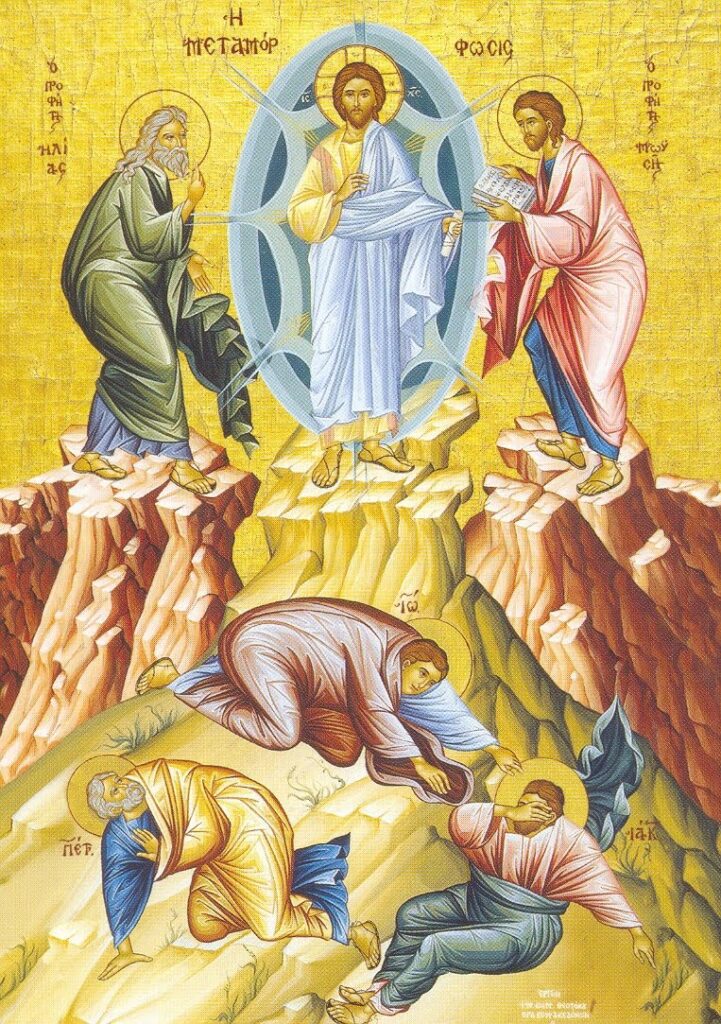
The Church fought courageously against the iconoclasts in the 9th century. They were against any veneration of images and icons. It was not only a matter of preserving venerable customs, works of art, or forms of devotion; the very truth of the incarnation was at stake: Jesus, true God, and true man. As perfect man, full image of God, icon of God, as St. Paul says. We can read everything we know about the invisible God in the visible face of Jesus. To condemn images was like denying the incarnation.
In the Transfiguration, many theologians discovered the mystery of the incarnation. For a moment the nature of God, metamorphosing Jesus Christ and enveloping Him in symbolic whiteness, became transparent in Him. The cloud, as in the Old Testament, symbolized the Father’s presence, and the heaven’s voice authenticated his divine sonship. At the same time, Moses and Elijah signified his continuity with the great human family of God’s people.
It was as if, for a moment, the glory of the Risen One, which by birth belonged to Jesus Christ and which was as if veiled during his life on earth in order to carry out his redemptive work, was, for those brief moments on Tabor unveiled, so that the disciples could have a glimpse of the profound reality of Christ and could set out with greater strength on the way to the cross.
The luminous and iconic mystery of the incarnation will be fully revealed in the final Resurrection, fleetingly glimpsed in the Transfiguration. In this life, we usually walk by faith, in the way the disciples lived in the very human company of Jesus coming down from the mountain and before the Passover.
With all the obscurities regarding the divine that this entails and even in that incomprehension that, according to the evangelists, Peter himself experiences, who understands little and who will even come to deny him.
We find moments of Transfiguration, also in our personal lives, prodigious moments that burn the soul and that, in the intimacy of the chosen disciples of the Lord. Have we ever felt this closeness in a retreat, in a moment of prayer, in a jubilant experience of God?
But, after a brief but glorious moment of Tabor, we are usually brought back down to earth, to the asphalt of Denver, the urgency of the exam, the tiredness or anguish of work, the distraction of my many worldly successes or entertainment, the apparent fullness of a successful and satisfied life when, on the contrary, the failures, the nostalgia of unfulfilled illusions, the monotony of life, or simply to insomnia, a headache, little desire to pray, prayer without consolation, without devotion.
It is challenging to remember on that plain, on the way to our own empty tomb, the flashes of the Transfiguration, much less to aspire eagerly to the glory of the Resurrection. “What will it mean to rise from the dead?” we say with Peter, James, and John.
With its call to prayer, Lent invites us to make a special effort to climb with Jesus to the lofty mountain of prayer and look up, in meditation, to the luminous icon of Christ. From this contemplation, we can recognize our faults and what goes wrong in ourselves and our families and draw experience from the past’s lights and shadows to amend our mistakes. Being in Mount Tabor enables us to soak ourselves in the light and splendors of the white robe of Jesus, to transfigure ourselves, to become his icons for others, imbued with the sacred image of his life, grateful and faithful sons and daughters.

